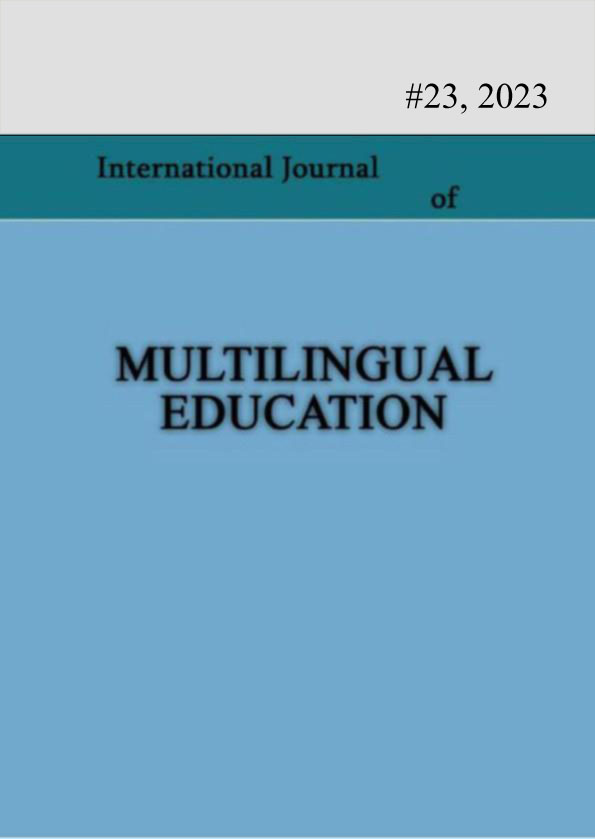Creating a Safe and Stress-free Environment when Using Extracurricular Activities in Second Language Teaching
Keywords:
Extracuricullar activities;The role of the teacher; Student’s contribution; Safe environment.Abstract
Using different methods and strategies in the process of a second language learning is considered as the most effective way to achieve maximum results. There is a wide variety of information about extracurricular activities, ways and methods of their implementation in academic sources. They mainly discuss their types, implementation methods and impact on students’ outcomes and success. The presented paper is focused on exploring, on the one hand ,the students' attitudes towards extracurricular activities and the ways it is possible to create a safe environment in the process of their use while integrating them into the formal second language learning. The theoretical framework of the research is based on the approaches and classifications presented in the academic sources. As part of the research, our own approaches have also been developed. The research is based on classroom observation, questionnaire analysis and analysis of academic sources. The paper identifies and classifies the elements and characteristics that create a safe and stress-free learning environment for learnerswhen using extracurricular activities. To achieve this goal, it was necessary to classify ECAactivities to identify student preferences. The questionnaire is presented in the form of a Googleform. Learners have learned a second language at different stages of their lives and in different institutions. Their current level of language proficiency is also different. To achieve theresearch goal, the paper will answer thefollowing research questions: 1. What types (intensity,form, and content) of extracurricular activities do students find lessstressful? 2. What is the role of teachers in employing extracurricular activities to create a stress-free environment? 3.How can students contribute to creating a stress-free environment by using extracurricular activities? 4. When is participation in extracurricular activities less stressful? As a result of the conducted research, it was revealed that students feel safe and stress-free when: •Participation in extracurricular activities is not compulsory, but they have a choice whether to participate in them or not. • When the extracurricular activity is not reflected in the evaluation and both the teacher and the students understand that it is an aid in the way of language progress. When they have clear instructions about the activity. • When the activity is not organized only for strong (or rarely weak)students. When the teacher considers the students' initiatives and adjusts them to her/his pedagogical goals. When the cultural and social experience of learners is taken into consideration when organizing activities. The paper presents practical recommendations that will help teachers in planning and conducting activities.
References
Ahsani, N. (2007). Nizam Ahsani, A STRESS-FREE APPROACH TO TEFL: Kajian Linguistik dan Sastra, Vol. 19, No. 1.: https://www.researchgate.net/publication/268423921 _A_STRESS- FREE_APPROACH_TO_TEFL; A STRESS-FREE APPROACH TO TEFL.
Billings E. & Walqui, A. (2021). Elsa Billings and Aída Walqui, n. d. The Zone of Proxim al Developm ent: A n A ffirm ative Perspective in Teaching ELLs/M LLs; https://www. nysed.gov/sites/default/files/programs/bilingual-ed/zone_proximal_development.pdf
Downloads
Published
How to Cite
Issue
Section
License
Copyright (c) 2023 Ketevan Gochitashvili

This work is licensed under a Creative Commons Attribution-NonCommercial 4.0 International License.
Copyright (c) - Authors who publish with this journal agree to the following terms: Authors retain copyright and grant the journal the right of first publication with the work simultaneously licensed under a Creative Commons Attribution-Noncommercial 4.0 International License, which allows others to share the work with an acknowledgement of the work's authorship and initial publication in this journal. Authors are permitted and encouraged to post their work online (e.g., in institutional repositories or on their personal website) prior to and during the submission process, as it can lead to productive exchanges, as well as earlier and greater citation of published work (see The Effect of Open Access). Authors may enter into separate, additional contractual arrangements for the non-exclusive distribution of the journal's published version of the work (e.g., post it to a repository or publish it in a book), with an acknowledgement of its initial publication in this journal.

